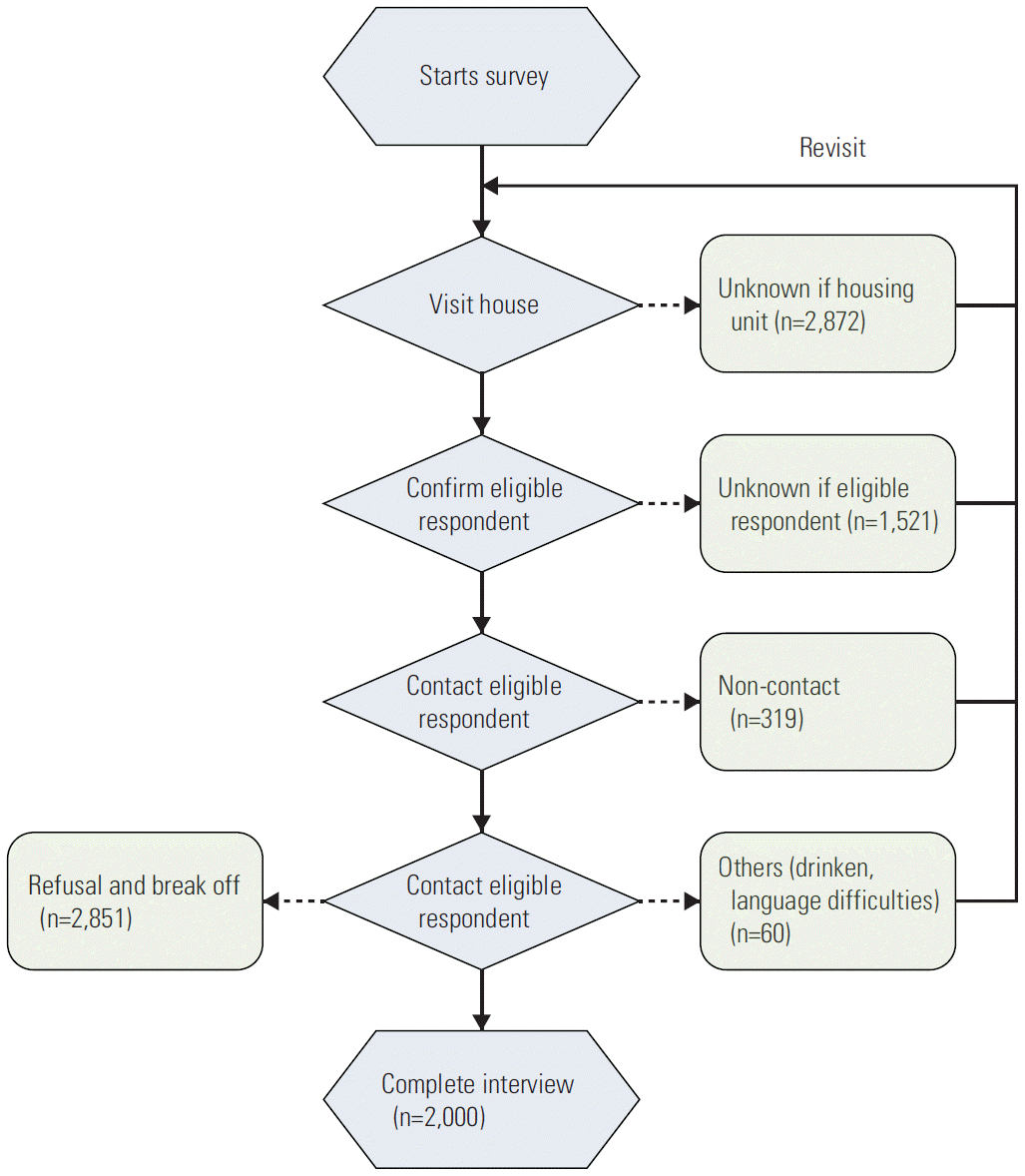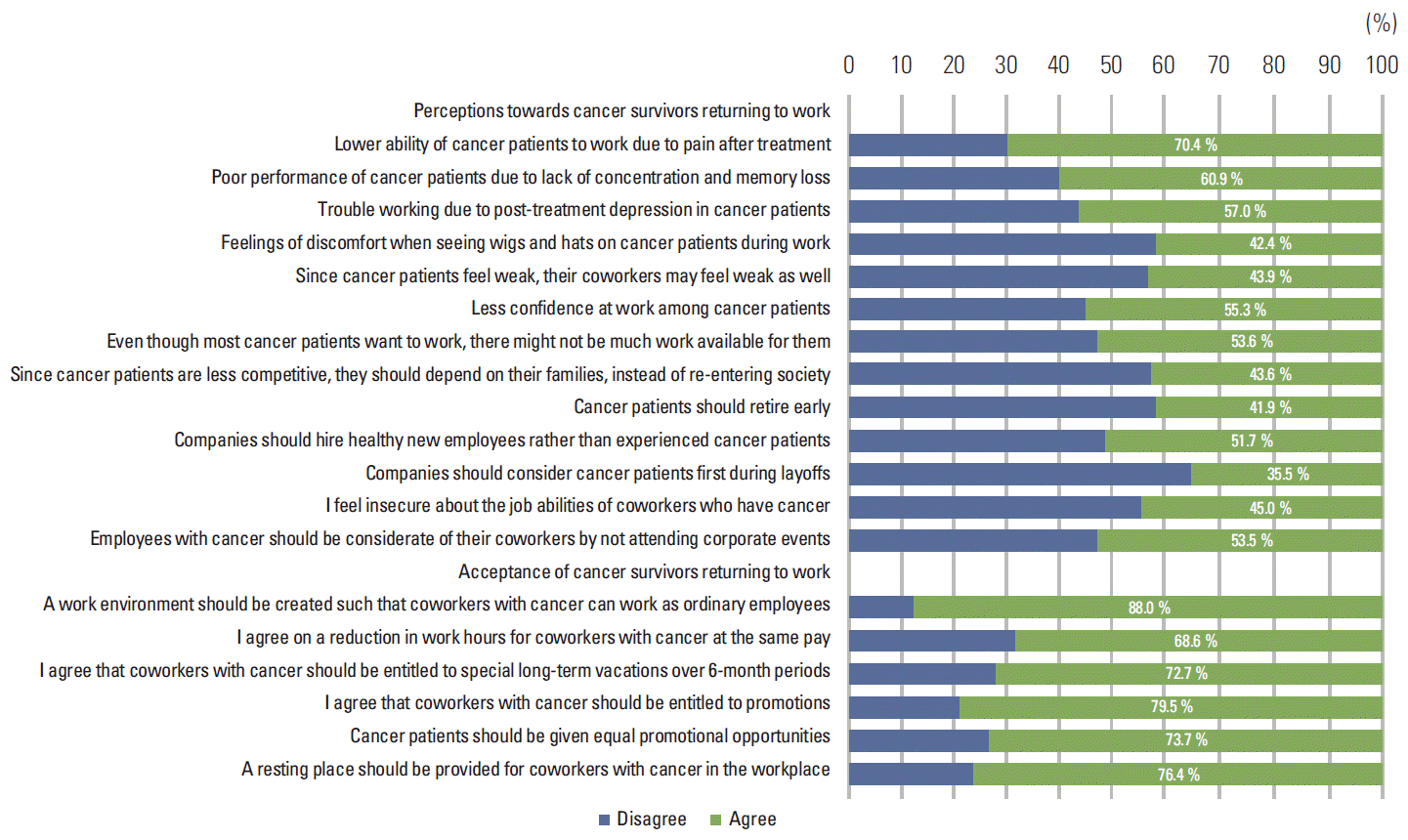1. Jung KW, Won YJ, Kong HJ, Oh CM, Seo HG, Lee JS. Cancer statistics in Korea: incidence, mortality, survival and prevalence in 2010. Cancer Res Treat. 2013; 45:1–14.

2. Chen HM, Tan WH, Tan WC, Yu CK, Lim TH, Tay MH, et al. Attitudes towards cancer survivors: a small survey. Singapore Med J. 2006; 47:143–6.
3. Park JH, Park EC, Park JH, Kim SG, Lee SY. Job loss and re-employment of cancer patients in Korean employees: a nationwide retrospective cohort study. J Clin Oncol. 2008. 26:1302–9.

4. Hoving JL, Broekhuizen ML, Frings-Dresen MH. Return to work of breast cancer survivors: a systematic review of intervention studies. BMC Cancer. 2009; 9:117.

5. Yabroff KR, Lawrence WF, Clauser S, Davis WW, Brown ML. Burden of illness in cancer survivors: findings from a population-based national sample. J Natl Cancer Inst. 2004; 96:1322–30.

6. Else-Quest NM, LoConte NK, Schiller JH, Hyde JS. Perceived stigma, self-blame, and adjustment among lung, breast and prostate cancer patients. Psychol Health. 2009; 24:949–64.

7. Cho J, Smith K, Choi EK, Kim IR, Chang YJ, Park HY, et al. Public attitudes toward cancer and cancer patients: a national survey in Korea. Psychooncology. 2013; 22:605–13.

8. Mosher CE, Danoff-Berg S. Death anxiety and cancer-related stigma: a terror management analysis. Death Stud. 2007; 31:885–907.

9. Wilson K, Luker KA. At home in hospital? Interaction and stigma in people affected by cancer. Soc Sci Med. 2006; 62:1616–27.

10. Lepore SJ. A social-cognitive processing model of emotional adjustment to cancer. In : Baum A, Andersen BL, editors. Psychosocial interventions for cancer. Washington, DC: American Psychological Association;2001. p. 99–116.
11. Allport GW. A social-cognitive processing model of emotional adjustment to cancer. In : Murchison C, editor. Handbook of social psychology. Worchester, MA: Clark University Press;1935. p. 785–844.
12. Kagawa-Singer M, Padilla GV, Ashing-Giwa K. Health-related quality of life and culture. Semin Oncol Nurs. 2010; 26:59–67.

13. Taskila T, Lindbohm ML. Factors affecting cancer survivors' employment and work ability. Acta Oncol. 2007; 46:446–51.

14. Sowden M, Vacek P, Geller BM. The impact of cancer diagnosis on employment: is there a difference between rural and urban populations? J Cancer Surviv. 2014; 8:213–7.

15. Taskila T, Martikainen R, Hietanen P, Lindbohm ML. Comparative study of work ability between cancer survivors and their referents. Eur J Cancer. 2007; 43:914–20.

16. Bradley CJ, Neumark D, Luo Z, Bednarek H, Schenk M. Employment outcomes of men treated for prostate cancer. J Natl Cancer Inst. 2005; 97:958–65.

17. DiSipio T, Hayes SC, Newman B, Aitken J, Janda M. Does quality of life among breast cancer survivors one year after diagnosis differ depending on urban and non-urban residence? A comparative study. Health Qual Life Outcomes. 2010; 8:3.

18. Weaver KE, Geiger AM, Lu L, Case LD. Rural-urban disparities in health status among US cancer survivors. Cancer. 2013; 119:1050–7.

19. Beck SL, Towsley GL, Caserta MS, Lindau K, Dudley WN. Symptom experiences and quality of life of rural and urban older adult cancer survivors. Cancer Nurs. 2009; 32:359–69.

20. Lee YJ. An study on the inepuality of health care resources distribution affected by regional characteristics. Crit Soc Welf Acad. 2005; 21:49–78.
21. Kim Y, Schulz R. Family caregivers' strains: comparative analysis of cancer caregiving with dementia, diabetes, and frail elderly caregiving. J Aging Health. 2008; 20:483–503.
22. Stetz KM, Brown MA. Physical and psychosocial health in family caregiving: a comparison of AIDS and cancer caregivers. Public Health Nurs. 2004; 21:533–40.

23. Park B, Kim SY, Shin JY, Sanson-Fisher RW, Shin DW, Cho J, et al. Suicidal ideation and suicide attempts in anxious or depressed family caregivers of patients with cancer: a nationwide survey in Korea. PLoS One. 2013; 8:e60230.

24. Honea NJ, Brintnall R, Given B, Sherwood P, Colao DB, Somers SC, et al. Putting Evidence into Practice: nursing assessment and interventions to reduce family caregiver strain and burden. Clin J Oncol Nurs. 2008; 12:507–16.





 PDF
PDF Citation
Citation Print
Print




 XML Download
XML Download